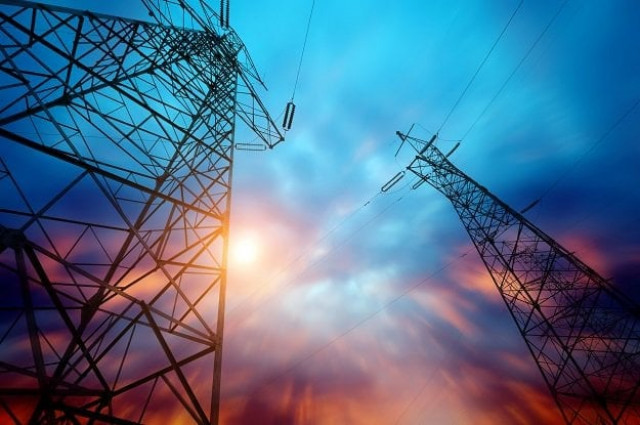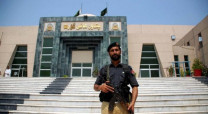Power tariff may go up by another Rs4.37
Govt plans to recover additional Rs122b from consumers in four months

The government has planned yet another increase of Rs4.37 per unit in electricity prices to recover an additional Rs122 billion from consumers in the next four months, which will take the total additional burden on them to Rs721 billion in this fiscal year alone.
But despite the planned increase, there will still be a Rs392 billion addition in the flow of the circular debt that will be offset with reduction in the debt stock through budget subsidies, official documents reveal.
The Rs4.37 per unit increase is aimed at keeping the circular debt at its current level of Rs2.31 trillion, as the Power Division does not see any improvement in higher electricity losses and theft that caused additional Rs236 billion losses in the last fiscal year.
The increase has been planned on account of the fourth quarter of last fiscal year’s adjustment that will be recovered from the consumers from September to December 2023, according to a revised Circular Debt Management Plan (CDMP) that the Power Division has shared with the International Monetary Fund (IMF).
The plan has revealed that a staggering Rs1.37 trillion more will be added to the country’s circular debt in a ‘business-as-usual’ move – a hole that the government now wishes to plug by increasing the price of electricity (Rs721 billion) and – around Rs600 billion in fiscal support to the bleeding sector.
The authorities have already increased the electricity prices on an average of Rs7 per unit on account of quarterly and annual base tariffs, which will help recover at least Rs600 billion from the consumers.
The plan, however, appears ambitious, as it has been made on the assumption that the rupee-dollar exchange rate is Rs286 per dollar and 19.4% Karachi Interbank Offered (KIBOR) rate. The current exchange rate stands at Rs295 and KIBOR is 22%.
An official of the Power Division said that the National Electric Power Regulatory Authority (Nepra) is scheduled to hold a hearing on the petition to increase the tariffs next week.
He said that depending upon Nepra’s decision, the federal cabinet will then decide about the actual increase that will be passed on to the consumers.
The electricity tariffs are already hitting the roof and the consumers are not able to pay their bills timely.
The sources said that the recovery of the bills in the jurisdiction of the Islamabad Electricity Supply Company has dropped to around 55%, which should be a matter of concern.
Earlier, the government had planned that the circular debt will be lowered to Rs2.128 trillion through a blend of reductions.
But the finance ministry found the reduction plan unrealistic and urged the Power Division to attempt to keep the circular debt at its current level of Rs2.31 trillion.
Even after the increase in prices, the estimated revenue of the power sector is Rs2.5 trillion while its liabilities are projected at Rs3.48 trillion.
The Rs976 billion gap will be filled through subsidies, including for retirement of the old stocks.
Compared to about Rs11.4 per unit overall increase in the prices, no improvement on account of reduction in theft and recovery of bills has been shown in the plan.
Instead, the Power Division has estimated that due to under recovery by power distribution companies, a sum of Rs263 billion will be added to the circular debt in this fiscal year.
Against 100% recovery target by Nepra, the Power Division has estimated the recovery at just 91% and the gap will add Rs263 billion to the debt in this fiscal year.
Another Rs201 billion will be added to the flow of the circular debt due to higher line losses by the distribution companies.
In the last fiscal year, the power sector circular debt jumped to Rs2.31 trillion after revenue gains from a massive increase in electricity prices were lost to the inefficiencies, theft, and losses faced by the power distribution companies.
Details showed that the consumers of Faisalabad, Gujranwala, and Islamabad power distribution companies compensated for the losses and theft by the consumers of Sindh.
Low recovery of bills added another Rs236 billion to the circular debt during FY23, which was higher by 31%.
In order to cut the flow of debt, the Power Division has estimated Rs126 billion additional subsidy for K-Electric, Rs6 billion for AJK and Rs109 billion savings from the mitigation measures.
The Power Division stated that there were uncertainties about the assumptions developed for the formulation of the plan. These include fuel price volatility, economic parameter variation, resource availability and change in commercial operations date (COD) of upcoming power plants, change in demand, KIBOR and inflation-related factors.
The Power Division has assumed that on the back of taxpayers money, the debt parked in the power holding company will be reduced from Rs765 billion to Rs683 billion. But the payables of the power producers are projected to increase from Rs1.434 trillion to Rs1.527 trillion.
The government has budgeted Rs310 billion to clear some of the old dues of the power producers but the stock will increase further.



















COMMENTS
Comments are moderated and generally will be posted if they are on-topic and not abusive.
For more information, please see our Comments FAQ